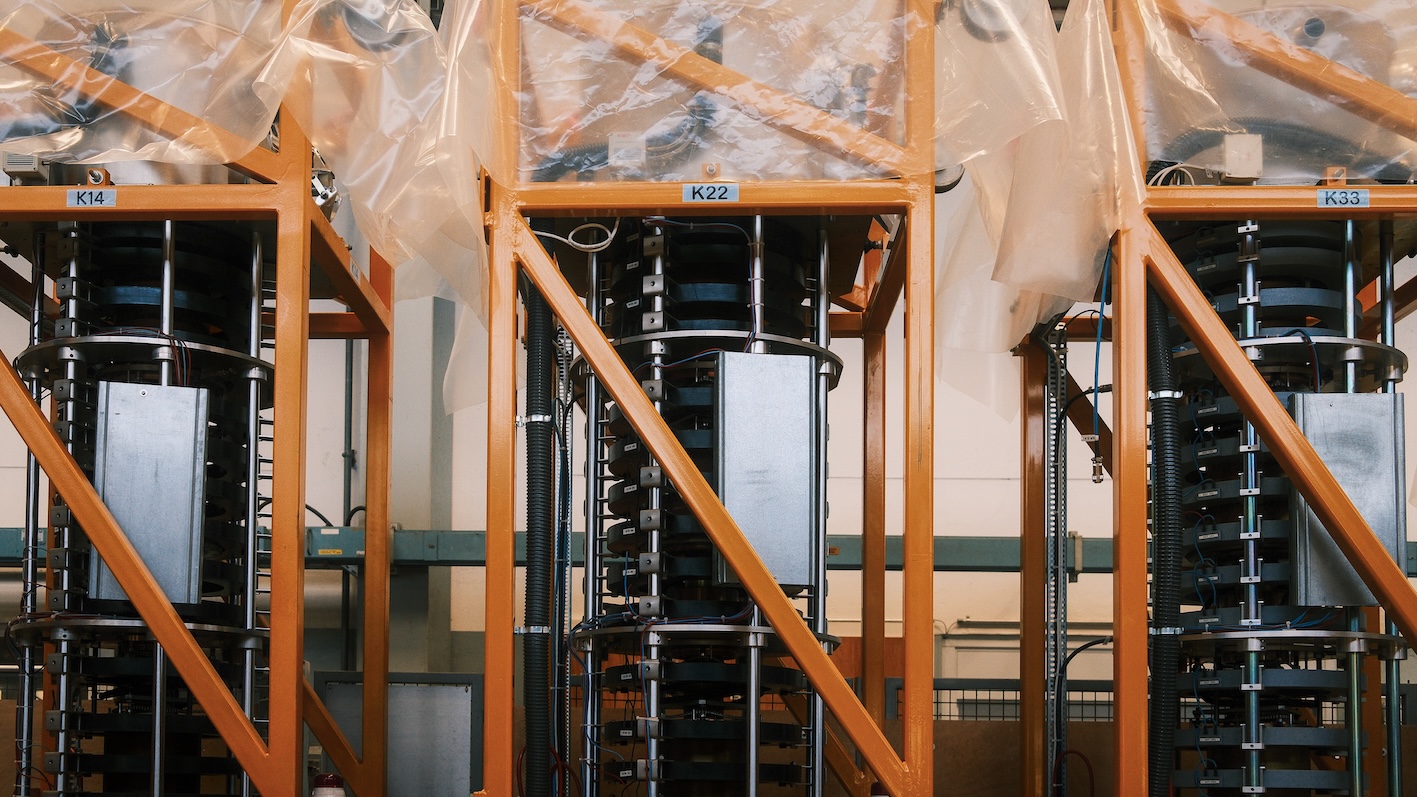
Testing klystron prototypes for the High-Luminosity LHC. The klystrons are housed within solenoids (black structures). (Image: N. Eskandari/CERN)
Limiting energy consumption is a major concern in the development of any new machine. In electron-positron colliders-such as the "Higgs factories" currently being conceived to study the enigmatic Higgs boson-fully 50 to 60% of the total energy consumption is used to power the radiofrequency (RF) cavities that accelerate the beams. Ongoing research at CERN promises to make this process much more energy efficient.
In a circular collider like the FCC under study, the energy of the electrons and positrons must be continually replenished by RF cavities, as charged particles radiate away energy in the bends. In a linear collider, the efficiency of the cavities is also crucial as the beam only passes once through each of them, so the particles must acquire all their energy in a single pass. Either way, the accelerating cavities are powered by devices called klystrons - and it is here that important efficiency gains can be achieved.
Klystrons are specialised vacuum tubes that amplify high-frequency radio waves by a factor of up to a million. The resulting electromagnetic waves excite strong electric fields inside finely tuned RF cavities, which accelerate passing particle beams to high energies. Invented in the 1930s to improve aircraft radar systems, klystrons have since been used in satellite communication, in broadcasting and in particle accelerators for medical, industrial and research purposes. However, klystron technology has historically only achieved 60% energy efficiency.
The High-Efficiency Klystron (HEK) project, launched ten years ago by CERN together with the University of Lancaster, has produced significant results. High-efficiency klystrons developed for the High-Luminosity LHC are now outperforming industrial klystrons by 10% in terms of efficiency, and CERN teams are working to achieve an efficiency of over 80%. The improvement of a type of unconventional klystron called a "triston"- an obscure idea plucked from the history of RF engineering by the CERN team - could even allow efficiencies as high as 90% to be reached. This could be a breakthrough technology with applications far beyond accelerators.
Read the full article in the CERN Courier







